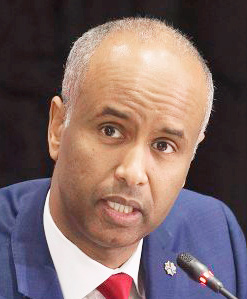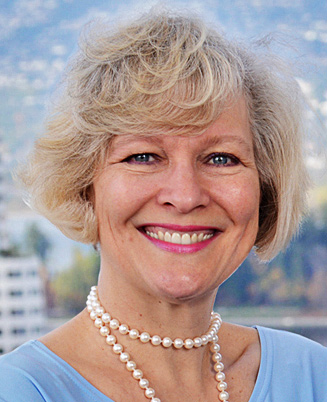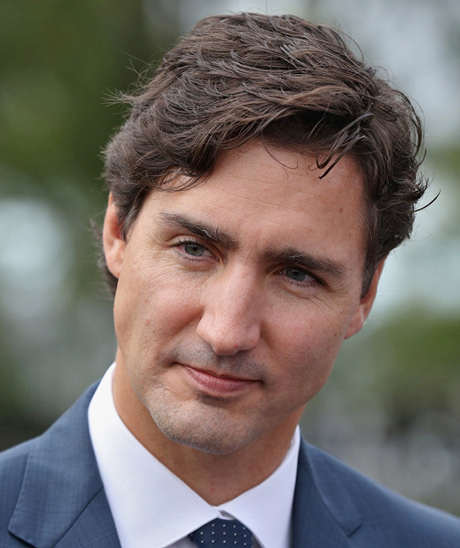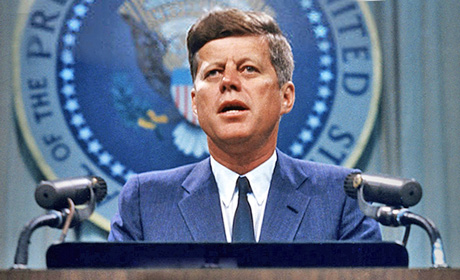In the News

By Catherine A. Sas Q.C.
The age for dependent children has been restored to under the age of 22 as of October 24, 2017.
This means that applicants for permanent residence to Canada can include their dependent children up to the age of 22 in an application for permanent residence in any of Canada's immigration programs whether family sponsorship, Express Entry, business immigration, caregiver or refugee applicants.
As noted previously, you can now sponsor your children 21 or younger. (WEBSITE LINK: http://canadian-visa-lawyer.com/ircc-restores-age-of-dependent-children-...)
Restoring the age for dependent children to under the age of 22 was one of the Liberal government's major immigration election platforms in 2015.
This is the second immigration election promise to finally be implemented this month with the changes to the Citizenship eligibility requirements taking effect on October 11.
The age for a dependent child had been under the age of 22 for many years; however on August 1, 2014 the former Conservative government lowered the age of the dependency to 18 or younger, noting that adult children could apply for permanent residence on their own merit.
For many families the inability to include their young adult children in their immigration applications was a deterrent to coming to Canada, as noted by many a Canada immigration lawyer.
This change signifies the Liberal government's commitment to family re-unification within Canada's immigration program.
The rationale for restoring the higher age limit is economic and social enhancement of Canadian communities. When introducing this statutory change, the Regulatory Impact Assessment Statement (RIAS) noted that "when families are able to remain together as an economic household unit, their integration into Canada and their ability to work and contribute to their communities improves."
The RIAS also made reference to the 2011 Census data which indicated that over half of Canadian young adults aged 20 - 24 live with their parents and further noted that " whether studying or not, many young adults in Canada and other countries, live with their parents."
Unfortunately, this regulatory change is not retroactive to August 2014. IRCC has declared that making the change retroactive would likely delay processing of current applications.
They have provided some flexibility for considering applications on humanitarian and compassionate (H & C) grounds for adult children excluded from the permanent resident process during this 3-year period.
H & C applications are always determined on a case by case basis and can not be relied upon to result in a positive outcome in all situations. (WEBSITE LINK:http://canadian-visa-lawyer.com/when-there-is-nowhere-left-to-turn/).
The restoration of the age of dependency up to 22 is positive news for prospective immigrant families as well as for Canada.
A welcome statement from the point of view of this Vancouver immigration lawyer was made by Canada's Minister of Immigration Ahmed Hussain. "Raising the age of dependents let's more families stay together. This will bring social and economic gains to our country as it enhances our attractiveness as a destination of choice for immigrants and refugees."
(Achim Steiner is Administrator of the United Nations Development Programme; Patricia Espinosa is Executive Secretary of UN Climate Change; and Robert Glasser is the UN Secretary-General’s Special Representative for Disaster Risk Reduction and head of the UN Office for Disaster Risk Reduction)

to increase debt

The study tracks how much they increased or decreased total federal debt (which includes all federal financial liabilities) during their time in office, after accounting for both inflation and population changes.
“Government debt matters – higher debt means more tax dollars are diverted away from important public programs in order to pay interest, and it leaves future generations on the hook to pay for today’s spending through higher taxes,” said Charles Lammam, director of fiscal studies at the Fraser Institute and co-author of An Analysis of Federal Debt in Canada by Prime Ministers Since Confederation.
Liberal Prime Minister Jean Chrétien cut per-person debt by 13 per cent while Paul Martin cut per-person debt by eight per cent. And Pearson reduced debt by 6 per cent.
Prime Minister Robert Borden, who governed during the First World War and four years of economic downturns, increased per-person debt levels the most (188 per cent). Louis St. Laurent lowered the federal per-person debt the most (34 per cent), even though his tenure included two recessions.

Washington: Botulism pills. Conspiracy theories. What the government might have known and still won’t say about Lee Harvey Oswald.
The release of thousands of records relating to the assassination of President John F Kennedy hasn’t settled the best-known, real-life whodunit in American history. But the record offered riveting details of the way intelligence services operated at the time and are striving to keep some particulars a secret even now.
“The Kennedy records really are an emblem of the fight of secrecy against transparency,” said Peter Kornbluh, senior analyst at the private National Security Archive research group in Washington. “The ‘secureaucrats’ managed to withhold key documents and keep this long saga of secrecy going.”
The 2,800 records released include some that had dribbled out over the years but are getting renewed attention from being in this big batch.
FBI director Hoover, worried
Just a few hours after Lee Harvey Oswald was killed in Dallas, FBI Director J Edgar Hoover dictated a memo saying the government needed to issue something “so we can convince the public” that Oswald killed President John F Kennedy.
The FBI director composed the memo on Nov 24, 1963 two days after Kennedy was killed and just hours after nightclub owner Jack Ruby fatally shot Oswald in the basement of the Dallas police station.
Hoover said that the FBI had an agent at the hospital in hopes of getting a confession from Oswald, but Oswald died before that could happen. Hoover said he and a deputy were concerned about “having something issued so we can convince the public that Oswald is the real assassin”. He lamented how Kennedy’s successor, President Lyndon B Johnson, was considering appointing a presidential commission to investigate the assassination. Hoover said he suggested that the FBI give an investigative report to the attorney general complete with photographs, laboratory work and other evidence. That report, he thought, could be given to Johnson and he could decide whether to make it public.
“I felt this was better because there are several aspects which would complicate our foreign relations,” Hoover wrote.
He said Oswald wrote a letter to the Soviet Embassy in Washington, which the FBI intercepted, read and resealed. Hoover said the letter had been addressed to the Soviet Embassy official “in charge of assassinations and similar activities on the part of the Soviet government. To have that drawn into a public hearing would muddy the waters internationally,” Hoover wrote.
Besides, Hoover said, the letter was unrelated proof that Oswald committed the murder.
LBJ’s theory
Everyone has their theories, including even President Lyndon B Johnson. According to one document released on Thursday, Johnson believed Kennedy was behind the assassination of the South Vietnamese president weeks before his death and that Kennedy’s murder was payback, the newly released documents say.
US Director of Central Intelligence Richard Helms said in a 1975 deposition that Johnson “used to go around saying that the reason [Kennedy] was assassinated was that he had assassinated President [Ngo Dinh] Diem and this was just justice”.
“Where he got this idea from I don’t know,” Helms said in a 1975 deposition.
Diem and his brother were killed on Nov 2, 1963 after a coup by South Vietnamese generals.
This isn’t the first time Johnson’s theory has been aired. He was also quoted in Max Holland’s book, The Kennedy Assassination Tapes, as saying that Kenney died because of “divine retribution”.
“He murdered Diem and then he got it himself,” Johnson reportedly said.
Kennedy’s position on Diem’s assassination is still debated, said Ken Hughes, a historian at the University of Virginia’s Miller Center.
A month before Diem’s assassination, the south Vietnamese generals planning the coup told the CIA that they would overthrow the government if they could be assured that American aid would continue and Kennedy told them it would, Hughes said.
But a dispute remains over whether Kennedy insisted that Diem go unharmed or whether the president left it up to the South Vietnamese generals to decide what to do, said Hughes, who is writing a book on the subject.
One of the files that could shed light on that question is a CIA report on the US government’s involvement in the Diem coup. The record was supposed to be released on Thursday but was among the hundreds that President Donald Trump blocked from becoming public.
KGB’s theory
The former Soviet Union’s intelligence agency allegedly claimed it had information tying Johnson to the assassination of President Kennedy.
The allegation was contained in long-secret files released Thursday.
In a 1966 letter to a presidential assistant, Hoover wrote that an FBI source reported KGB officials claimed to have information in 1965 “purporting to indicate” Johnson had a role in the assassination.
The source had “furnished reliable information in the past”, the letter states. The source said the KGB residency in New York received instructions from Moscow in September 1965 to “develop all possible information” on Johnson, who was considered “practically an unknown” to the Soviet government at the time.
Those instructions contained the assertion that the KGB had information tying Johnson to an assassination plot, according to the source.
Johnson has long been a focus of some conspiracy theorists, but no credible information has been revealed linking him to the assassination.
Castro, CIA and a mobster’s mistress
A 1975 document described the CIA’s $150,000 offer to have Cuban leader Fidel Castro assassinated but the mob insisted on taking the job for free.
The underworld murder-for-hire contract was detailed in a summary of a May 1962 CIA briefing for then-Attorney General Robert Kennedy. By then, the Kennedy White House had launched its unsuccessful Bay of Pigs invasion of Cuba and several assassination attempts against Castro had failed.
At least two efforts to kill Castro were made with CIA-supplied lethal pills and organised crime-made muscle in early 1961, according to the document. The CIA’s mob contacts included John Rosselli, a top lieutenant to Chicago mob boss Sam Giancana, who weren’t told but guessed the CIA was behind the offer. The pair, later victims of mob hits, said they want no part of any payment but still, $11,000 in payments were made for expenses.
The mobsters came to the attention of the CIA a year earlier when Giancana asked a CIA intermediary to arrange for putting a listening device in the Las Vegas room of an entertainer he suspected of having an affair with Giancana’s mistress. The task was handed off to a private investigator named Arthur Balletti, who put the listening device in a phone in the hotel room. “The CIA reportedly did not know of the specific proposed wiretap.”
Told later about “everything”, Kennedy was “unhappy, because at that time he felt he was making a very strong drive to try to get after the Mafia.
“So his comment was to us that if we were going to get involved with the Mafia, in the future at any time, to ‘make sure you see me first’.” The document was made public in 1997 and contained in an Associated Press report at that time.
Strange call
A British newspaper received an anonymous phone call about “big news” in the US 25 minutes before Kennedy was shot, one file says.
A Nov 26, 1963 memo from the CIA to FBI director Hoover about a call received by the Cambridge News on Nov 22, the day Kennedy was killed in Dallas, was also among the declassified files.
The memo from CIA deputy director James Angleton says the caller said “the Cambridge News reporter should call the American Embassy in London for some big news, and then hung up”.
Anna Savva, a current Cambridge News reporter, said on Friday there’s no record of the call. “We have nobody here who knows the name of the person who took the call,” she said.
The memo was released by the US National Archives in July.
The phone call to the Cambridge News was first reported decades ago by Kennedy conspiracy theorist Michael Eddowes.
In the 1980s, Eddowes, a British lawyer, claimed to have a CIA document mentioning the call. Eddowes, who died in 1992, wrote a book alleging that Kennedy’s assassin was not Lee Harvey Oswald but a Soviet impostor who took his identity. As a result of his efforts, the killer’s body was exhumed in 1981. An autopsy confirmed that it was Oswald. —AP
To advertise in ICW call
Call 905-738-5005